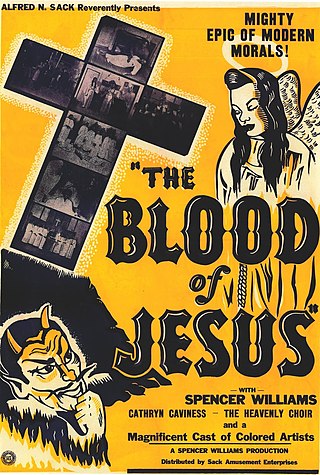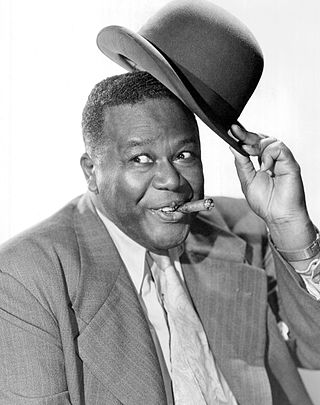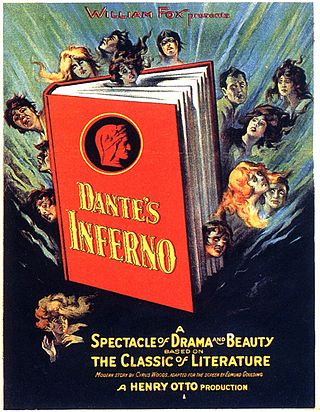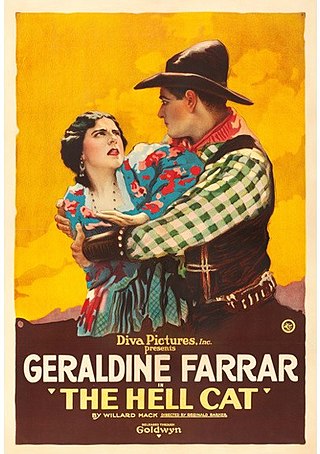
The Blood of Jesus is a 1941 American independent fantasy drama race film written, directed by and starring Spencer Williams. The plot concerns a Baptist woman who, after being accidentally shot by her atheist husband, is sent to a crossroads, where Satan tries to lead her astray.

Henry Kenneth Alfred Russell was a British film director, known for his pioneering work in television and film and for his flamboyant and controversial style. His films were mainly liberal adaptations of existing texts, or biographies, notably of composers of the Romantic era. Russell began directing for the BBC, where he made creative adaptations of composers' lives which were unusual for the time. He also directed many feature films independently and for studios.

The Devils is a 1971 historical drama horror film written, produced and directed by Ken Russell, and starring Vanessa Redgrave and Oliver Reed. A dramatised historical account of the fall of Urbain Grandier, a 17th-century Roman Catholic priest accused of witchcraft after the possessions in Loudun, France, the plot also focuses on Sister Jeanne des Anges, a sexually repressed nun who incites the accusations.

An exploitation film is a film that tries to succeed financially by exploiting current trends, niche genres, or lurid content. Exploitation films are generally low-quality "B movies", though some set trends, attract critical attention, become historically important, and even gain a cult following.

The Wicked Lady is a 1945 British costume drama film directed by Leslie Arliss and starring Margaret Lockwood in the title role as a nobleman's wife who becomes a highwaywoman for the excitement. The film had one of the largest audiences for a film of its period, 18.4 million.

Spencer Williams was an American actor and filmmaker. He portrayed Andy on TV's The Amos 'n' Andy Show and directed films including the 1941 race film The Blood of Jesus. Williams was a pioneering African-American film producer and director.

Sunday Go to Meetin' Time is a 1936 Warner Bros. Merrie Melodies cartoon directed by Friz Freleng. The short was released on August 8, 1936. The name of the short comes from the colloquial adjective "sunday-go-to-meeting," describing something appropriate for church or otherwise presentable.

L'Inferno is a 1911 Italian silent film, loosely adapted from Inferno, the first canticle of Dante Alighieri's Divine Comedy. L'Inferno took over three years to make, and was the first full-length Italian feature film.

Noble Johnson, later known as Mark Noble, was an American actor and film producer. He appeared in films such as The Mummy (1932), The Most Dangerous Game (1932), King Kong (1933) and Son of Kong (1933).
Myra Lillian Davis Hemmings was an American actress and teacher, and a founder of Delta Sigma Theta Sorority, Incorporated.

The Christian film industry is an aspect of Christian media for films containing a Christian-themed message or moral. They are often interdenominational films, but can also be films targeting a specific denomination of Christianity.

Dante's Inferno is a 1924 American silent drama film directed by Henry Otto that was released by Fox Film Corporation and adapted from Inferno, part of Dante Alighieri's epic poem Divine Comedy. The film mixes material from Dante's "Inferno" with plot points from Charles Dickens' A Christmas Carol. The book was filmed earlier in 1911 in Italy as L'Inferno, and Fox later remade the film in 1935, again as Dante's Inferno, starring Spencer Tracy in the lead role.

Son of Ingagi is a 1940 American monster movie directed by Richard C. Kahn. It was the first science fiction horror film to feature an all-black cast. It was written by Spencer Williams based on his own short story, House of Horror. Although the film's title appears to suggest that it is a sequel to the 1930 movie Ingagi, it is not.

Federico Álvarez is a Uruguayan filmmaker. He is known for directing Evil Dead (2013) and Don't Breathe (2016), as well as his short film Ataque de pánico! (2009).
Trailers from Hell is a web series in which filmmakers discuss and promote individual movies through commenting on their trailers. While the series emphasizes horror, science fiction, fantasy, cult, and exploitation cinema, films from a wide variety of genres have been covered. Trailers from Hell launched as a website in October 2007, as a collaborative project by film director Joe Dante, new media entrepreneur Jonas Hudson, graphic artist Charlie Largent, web developer Tom Edgar, and producer Elizabeth Stanley. It also premiered at SXSW in 2009.

The Hell Cat is a 1918 American silent Western film produced and distributed by Goldwyn Pictures. Reginald Barker directed and Geraldine Farrar starred. It is not known whether the film currently survives.
The Virginia State Board of Censors was a government agency formed on August 1, 1922 for the purpose of reviewing and licensing films for approval to be screened in the state of Virginia. During the agency's existence its members examined over 52,000 films, over 2,000 of which required edits before approval was given; and another 157 films were rejected entirely, of which only 38 won subsequent approval. The board disbanded in 1968 following a series of U.S. Supreme Court rulings which overturned censorship statutes across the country.
Alfred N. Sack was an American businessperson, newspaper publisher and the proprietor of film distribution, production, and the theater-owning business Sack Amusements in the United States.. He collaborated with Spencer Williams to make films with Black casts. Sack Amusement Enterprises was the leading distributor of this type of film between 1920 and 1950.
Juke: Passages from the Films of Spencer Williams is a 2015 documentary film by film essayist Thom Andersen featuring selected excerpts from the films of African American director Spencer Williams Jr.














